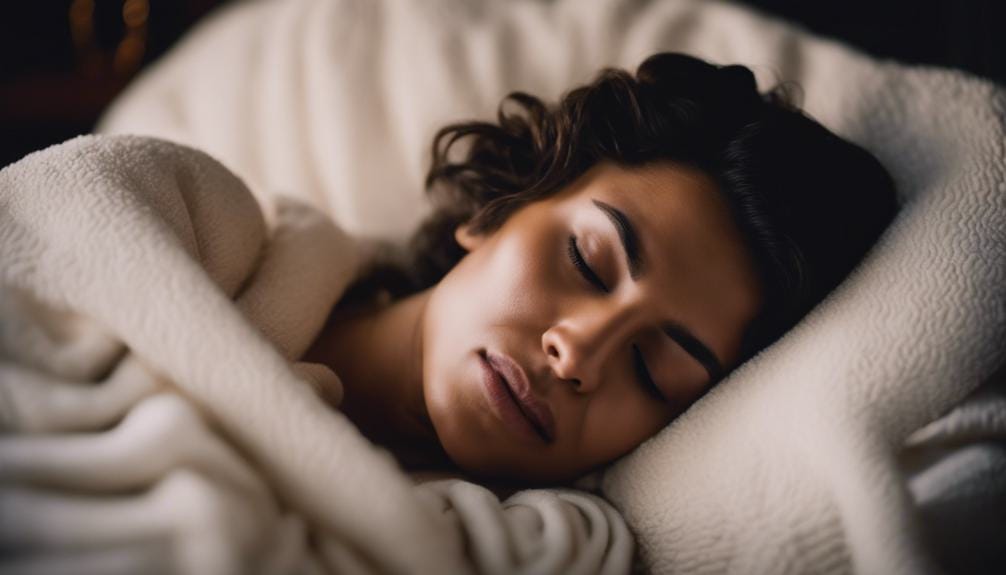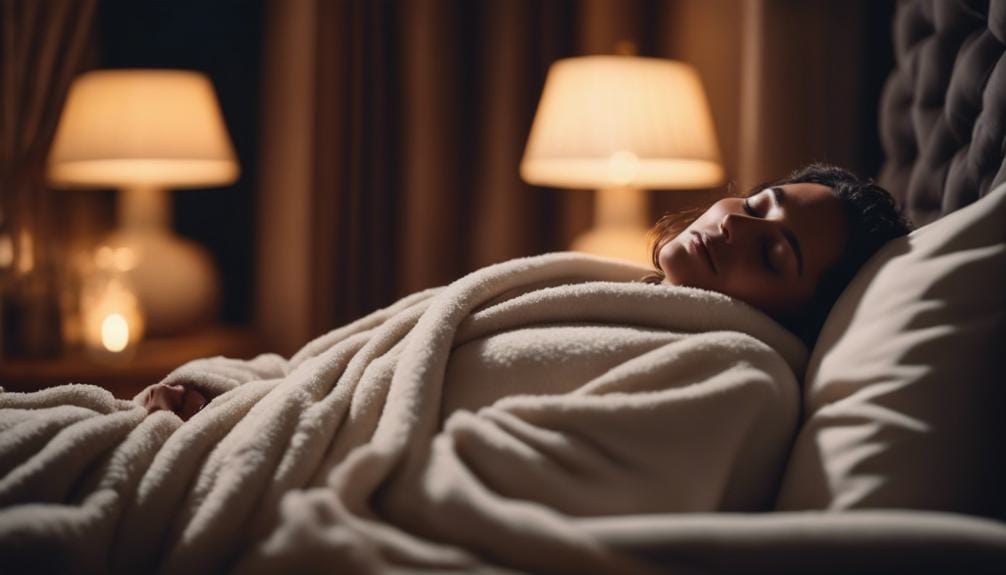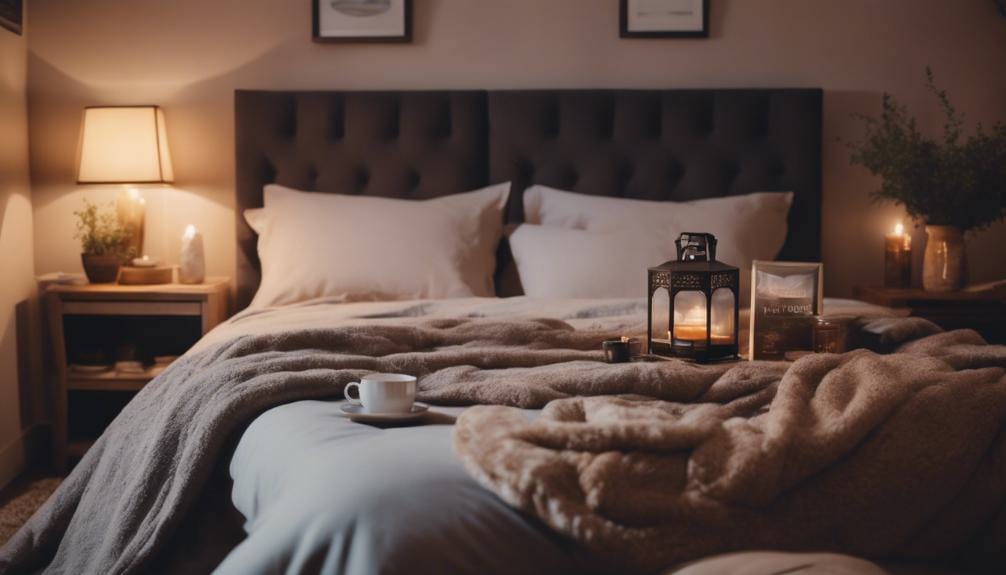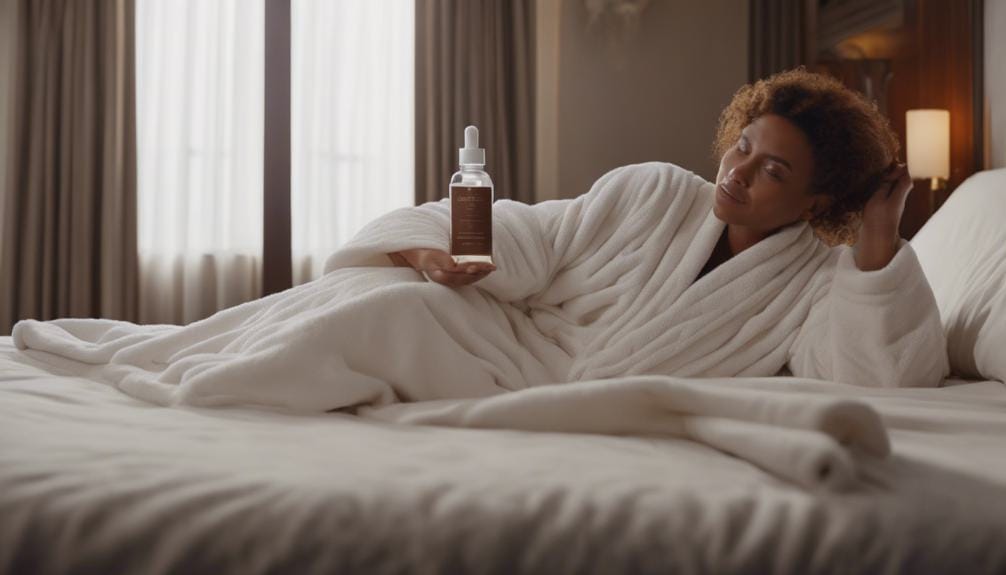Can You Sleep in a Robe? Pros, Cons & Tips
You may have pondered the idea of drifting off to dreamland in your cozy robe, but is it really a wise choice?
The debate on whether sleeping in a robe is beneficial or detrimental is a nuanced one, with factors like fabric type, temperature regulation, and personal preferences coming into play.
As you contemplate the decision to don your robe for a night’s rest, consider the potential pros and cons that could influence your sleep quality and overall comfort.
Are you ready to explore the intricacies of robe-wearing at bedtime and uncover the secrets to a restful night’s sleep?
Key Takeaways
- Sleeping in a robe offers warmth, comfort, and convenience.
- Choose a breathable, properly sized, and comfortable robe for quality sleep.
- Hygiene is crucial; opt for a clean robe, consider changing, and prioritize cleanliness.
- Robe sleeping is a subjective choice based on personal comfort preferences and practical considerations.
Pros and Cons of Sleeping in a Robe
When considering whether to sleep in a robe, weighing the pros and cons can help you make an informed decision that aligns with your comfort preferences. Dressing gowns are known for their ability to keep you warm, making them a cozy choice for colder nights. The added layer of a robe can provide insulation, trapping body heat and creating a snug environment that promotes better sleep quality in chilly weather. For individuals who tend to feel cold during the night, wearing a robe to bed can be a practical solution to stay comfortable and maintain the best body temperature.
On the other hand, it’s crucial to be mindful of the potential drawbacks of sleeping in a robe. While dressing gowns offer warmth, they may lead to overheating for some individuals, especially those who naturally run hot or prefer lighter sleep attire. If you find yourself waking up sweaty or uncomfortable due to excess heat retention, opting for lighter pajamas or skipping the robe altogether could be a better choice to guarantee a restful night’s sleep. Ultimately, personal preferences and how your body responds to different sleepwear options should guide your decision on whether to include a robe in your bedtime routine.
Comfort Vs. Disruption: Robes at Bedtime

Given the balance between comfort and potential disruption, integrating a robe into your bedtime routine can impact your overall sleep experience differently based on individual preferences and comfort needs.
Sleeping in a robe can provide a sense of comfort and warmth, particularly during colder nights, making it a cozy choice for many. The soft fabric and relaxed fit of a robe may contribute to a feeling of ease and leisure, enhancing relaxation before bedtime.
However, the choice to wear a robe to sleep is subjective, and some individuals might find it disruptive or uncomfortable. While robes can be cozy, some people may feel restricted or overheated when wearing them in bed. It’s crucial to ponder personal preferences and comfort levels when deciding whether to sleep in a robe. Factors such as fabric type, room temperature, and individual sensitivity to clothing textures can influence whether wearing a robe to bed is a soothing choice or a potential disruption to a restful night’s sleep.
Ultimately, the comfort versus disruption aspect of sleeping in a robe varies from person to person. Experimenting with different sleepwear options and listening to your body’s cues can help you determine whether integrating a robe into your bedtime routine enhances or hinders your overall sleep quality.
Impact on Sleep Quality: Robe Wearing

Sleeping in a robe can greatly impact your sleep quality by providing added warmth and comfort, especially on colder nights. It’s a personal choice that can enhance your bedtime routine in various ways:
- Warmth and Comfort: For almost everyone, the cozy feeling of a robe can create a sense of security and relaxation, promoting better sleep quality.
- Convenience: Some individuals find wearing a robe to bed convenient for quick access to warmth and coverage, making it an easy choice for those chilly mornings or nights.
- Personal Preference: The decision to sleep in a robe is subjective, with some people enjoying the experience while others prefer alternative sleep attire based on their comfort levels.
- Durable Materials: Robes made from durable materials offer longevity and comfort, ensuring that you can enjoy the benefits of robe-wearing for a long time.
Choosing to sleep in a robe can be a soothing and relaxing experience, especially for those who appreciate the feeling of being enveloped in warmth. The comfort and warmth provided by a robe can contribute to unwinding before sleep, ultimately improving your overall sleep quality.
Practical Tips for Sleeping in Robes

To optimize your comfort and sleep quality while wearing a robe, selecting a lightweight and breathable fabric is essential. This will guarantee that you do not overheat during the night and can move freely without feeling constricted. Soft and non-irritating materials are also vital to prevent any discomfort while sleeping. Here are some practical tips for sleeping in robes:
| Tip | Description |
|---|---|
| Choose the right fabric | Opt for cotton, bamboo, or modal fabrics for a soft feel and breathability. |
| Make sure the robe is the right size | A robe that is too tight can be uncomfortable, while one that is too loose may get tangled during sleep. |
| Consider the robe length | Select a length that suits your preferences, whether short or long, for the best comfort. |
When creating your collection to feel the perfect bathrobe, keep in mind these tips to enhance your sleep experience. A well-chosen robe can make a significant difference in how comfortable and cozy you feel throughout the night.
Hygiene Considerations for Robe Sleeping

For vital hygiene when sleeping in a robe, it’s optimal to be mindful of the dirt and bacteria that can transfer from your daywear onto your bedding.
- Regular Washing: It’s important to regularly wash your robe to remove accumulated sweat, oils, and germs. This practice helps maintain cleanliness and reduces the risk of spreading bacteria while sleeping.
- Clean vs. Day-worn Robe: Opt for a clean robe specifically for sleep to minimize the transfer of dirt and bacteria onto your bedding. Sleeping in a freshly washed robe can be more hygienic than wearing one that has been worn throughout the day.
- Changing Attire: Consider changing into fresh sleep attire such as pajamas instead of a robe to promote better hygiene. Pajamas can offer a clean barrier between your body and bedding, reducing the chances of transferring germs.
- Towel-Wrapped: If you prefer to wear a robe to bed, consider wrapping yourself in a clean towel before putting on the robe. This extra layer can help reduce the direct contact between the robe and your skin, potentially decreasing the transfer of dirt and bacteria.
When considering purchasing a new robe for sleeping, look for reputable companies on Amazon that offer robes made from breathable and easy-to-clean materials. Prioritizing hygiene when sleeping in a robe can contribute to a more comfortable and healthier night’s rest.
Frequently Asked Questions
Why Do People Wear Robes at Night?
People wear robes at night for added warmth, comfort, and convenience. It’s a cozy choice for sleep or quick coverage during late-night activities. Robes offer a familiar bedtime attire and are a personal preference based on comfort and convenience.
Is a Robe Considered Pajamas?
No, a robe is not considered pajamas. While robes offer comfort and warmth, they are typically worn over pajamas or nightwear. Robes are more versatile for relaxation and post-shower use, not specifically designed for sleeping.
What Is the Point of a Robe?
Robes are versatile garments that offer comfort, warmth, and privacy. They are designed for in-between moments, like after showers or before bed. Made of absorbent materials, robes provide convenience and coziness, making them a practical addition to your daily routine.
Do You Wear Anything Under a Robe?
You can wear anything under a robe based on personal preference. Undergarments offer comfort and modesty, while some prefer the freedom of going commando. Consider the robe’s material and warmth needed. It’s up to you how you want to cozy up!
Conclusion
To sum up, sleeping in a robe can be a comfortable and cozy experience for many individuals. However, it’s important to contemplate the potential impact on sleep quality and hygiene when opting to sleep in a robe.
By weighing the pros and cons, practicing good hygiene habits, and following practical tips, you can make an informed decision on whether sleeping in a robe is right for you. Ultimately, the choice is yours to make based on your personal preferences and comfort levels.
